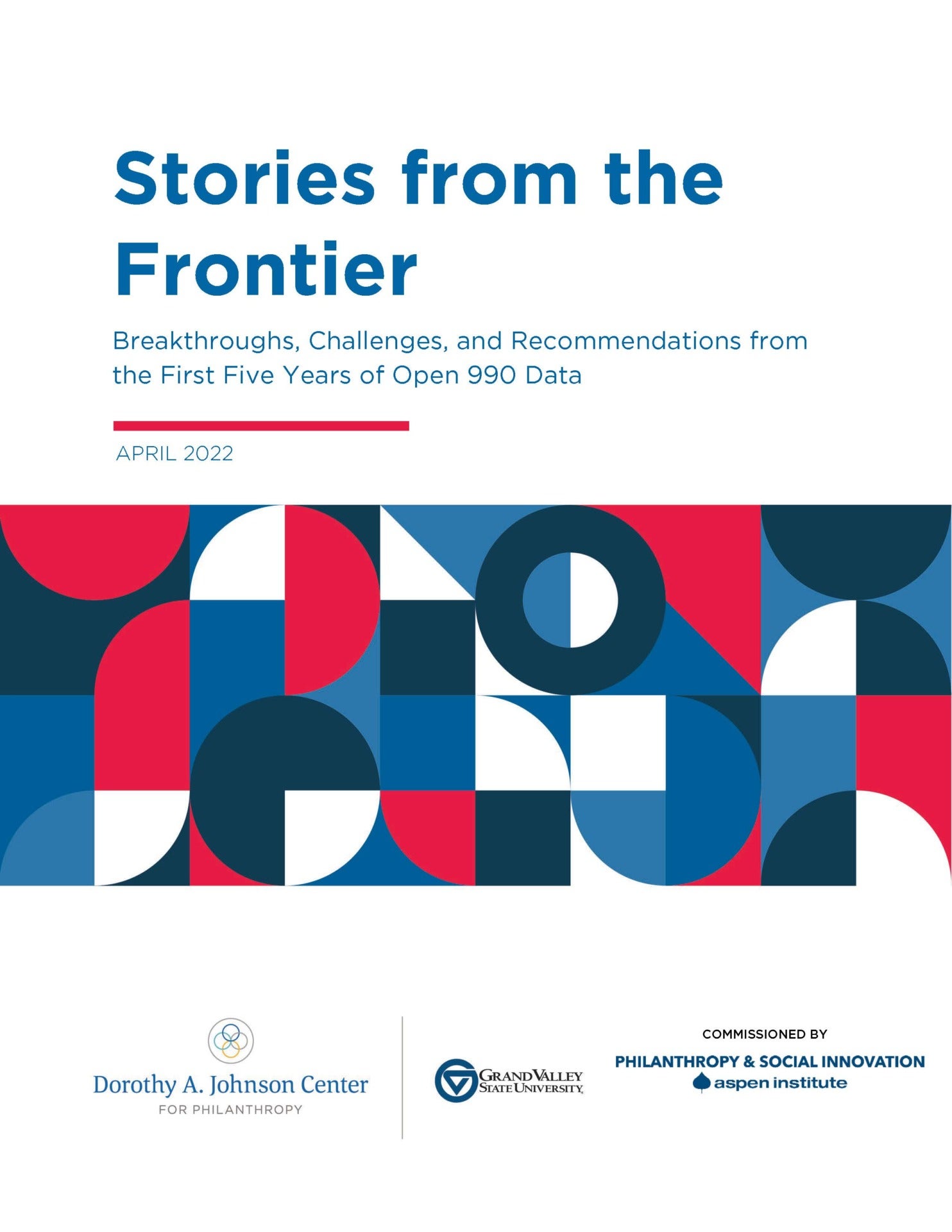Read our new report to learn how open Form 990 data is empowering change throughout the nonprofit sector! PSI commissioned the Dorothy A. Johnson Center for Philanthropy at Grand Valley State University to author the report.
Making 990 data searchable and available for free to the public has revolutionized nonprofit information and scholarship by massively reducing costs and increasing efficiency. Researchers, nonprofits, government regulators, and journalists are using previously inaccessible data to further transparency, educate donors, advance knowledge, and fuel innovation. The report also provides a list of tools and resources for accessing 990 data.
ACCESS 990 TOOLS AND RESOURCES HERE
The research team identified pioneering open 990 data use cases, such as:
- New tools for donors identifying nonprofits in need during the COVID-19 pandemic.
- More efficient prosecution of charitable fraud, including a campaign by NY Attorney General’s Office that recovered $1.7 million from sham charities and redirected funds.
- Groundbreaking studies on fundraising, volunteers, equity, and management. This was “simply not possible to do before, unless you had unlimited funding,” Dr. Russell James said of his research.
- News articles on nonprofit hospitals revealing that low-income patients were charged billions over the course of a year, despite their eligibility for free or discounted care.
The report comes as the IRS completes its rollout of mandatory 990 electronic filing, via an open data law championed by the Aspen Institute and its partners.
Despite the promise of open data, barriers to access, usability, and timeliness remain. The report includes recommendations for how the IRS, other federal agencies, and data providers can ensure that open 990 data is maximally useful. An example of ongoing efforts to advance the report’s recommendations is this recent letter to senior IRS officials signed by Independent Sector, Candid, Charity Navigator, National Committee for Responsive Philanthropy, scholars, and others aligned with the report’s vision of a more data-informed future.
To promote the report, here is a social media toolkit to use.


